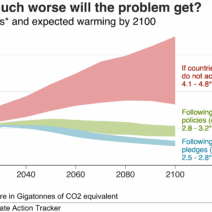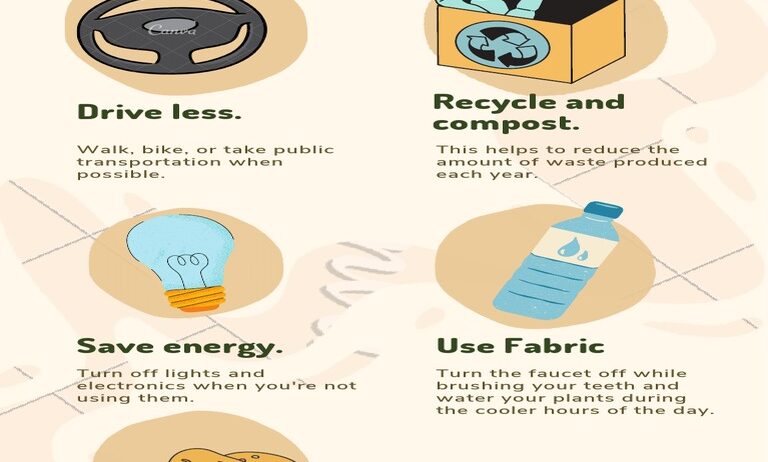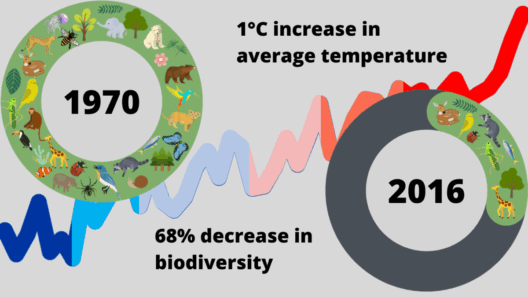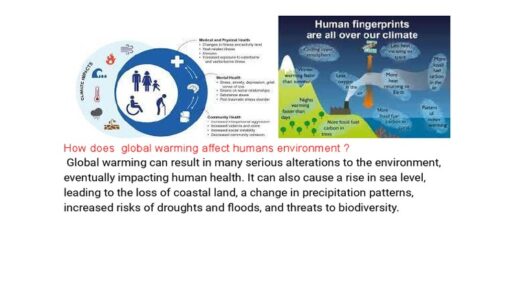Climate change is an omnipresent and escalating concern that affects every corner of our planet. While governments and industries play pivotal roles in tackling this crisis, individual actions collectively wield significant power. It’s imperative to understand that every decision we make can contribute to a more sustainable future. This article outlines practical ways to reduce climate change, appealing to various lifestyles and encouraging curiosity about the impact each choice can engender.
Understanding the nuances of our carbon footprints is the first step towards meaningful change. By adopting new perspectives, we can cultivate more eco-conscious habits that resonate not just personally, but globally. Let us embark on this transformative journey together.
Explore Your Consumption: Wise Choices Start at the Store
The choices we make in the supermarket can yield a substantial impact on the environment. Selecting local and organic products not only supports your community but also diminishes the carbon footprint associated with transportation and industrial farming practices. Foods shipped from distant locations contribute significantly to greenhouse gas emissions. By purchasing local produce, you amplify the regional economy while embracing fresher and healthier options.
Moreover, understanding labels is crucial. Products with certifications such as USDA Organic or Fair Trade often signify more sustainable practices. Engage with brands that prioritize environmental stewardship. This approach encourages consumers to hold corporations accountable, fostering a marketplace that is not only profitable but also planet-friendly.
Mindful Eating: The Shift Towards Plant-Based Diets
Engaging in a plant-based diet can drastically reduce our personal contributions to climate change. The livestock industry is one of the largest contributors to greenhouse gas emissions, water consumption, and deforestation. By reducing meat intake, or better yet, exploring vegetarian or vegan alternatives, individuals can significantly lower their carbon footprints.
Transitioning to a plant-forward diet doesn’t mean sacrificing flavor or satisfaction. Experimenting with new recipes can be an exciting culinary adventure. Incorporating seasonal vegetables and grains can revitalize your meals while benefitting the environment. The journey toward plant-based eating can also spark curiosity about nutrition and local biodiversity.
Energy Savvy: Transforming the Home into a Green Sanctuary
Turning our homes into bastions of sustainability involves both technology and mindfulness. Begin by assessing energy consumption. Simple measures, such as switching to energy-efficient appliances, can lead to substantial reductions in energy use. Consider integrating smart home technology that allows for more efficient energy management, like temperature control and scheduled energy use.
Another powerful strategy is to embrace renewable energy sources. If possible, install solar panels to harness the sun’s energy. Participating in community solar projects enables households to benefit from renewable energy without having to invest in their own solar infrastructure.
Additionally, consider investing in energy-efficient windows, insulation, and weatherproofing. These measures reduce heating and cooling demands, further mitigating energy consumption. The endeavor to create an energy-efficient home cultivates a deeper awareness of consumption patterns and can inspire others in your community to follow suit.
Reduce, Reuse, and Recycle: Circular Living Practices
Embracing the ethos of reduce, reuse, and recycle can reshape our relationship with material goods. Every year, millions of tons of waste are generated, contributing dramatically to pollution and environmental degradation. The first step is to minimize consumption by making conscious purchasing decisions. Ask yourself if items are truly necessary before acquiring them.
Consider repurposing items instead of discarding them. For instance, glass jars can become storage solutions, while old clothes can be transformed into rags or art projects. This imaginative approach extends the life cycle of products and reduces the demands on manufacturing. Sharing and trading are also effective means to circulate resources within your community, further fostering connections while decreasing waste.
Incorporating comprehensive recycling practices is equally vital. Familiarize yourself with local recycling guidelines to avoid contamination and optimize resource recovery. Engage family and friends in discussions about recycling, fostering a culture of awareness and responsibility.
Advocate for Change: Elevate Your Voice
Action at the individual level extends beyond personal practices; it encompasses advocacy as well. Raising awareness about climate change and sustainable practices can incite collective action within communities. Participate in or organize community initiatives such as clean-up drives, tree-planting events, or educational workshops. By galvanizing others, individuals can amplify their impact on climate change.
Furthermore, engaging in political discourse is essential. Support policies that prioritize renewable energy, conservation efforts, and climate justice. Encouraging elected officials to take climate change seriously can lead to substantial changes on a national and international level. Use your voice to champion initiatives that align with sustainable development goals.
In conclusion, the pursuit of reducing climate change is not only a responsibility but an opportunity for transformation. Through conscious consumption, dietary changes, energy efficiency, a commitment to sustainability, and advocacy, each of us can contribute to a more habitable planet. Explore the multitude of ways to enact change, encourage curiosity, and cultivate a community driven toward ecological stewardship. A collective effort can indeed transcend individual action, paving the way for a sustainable future for generations to come.






